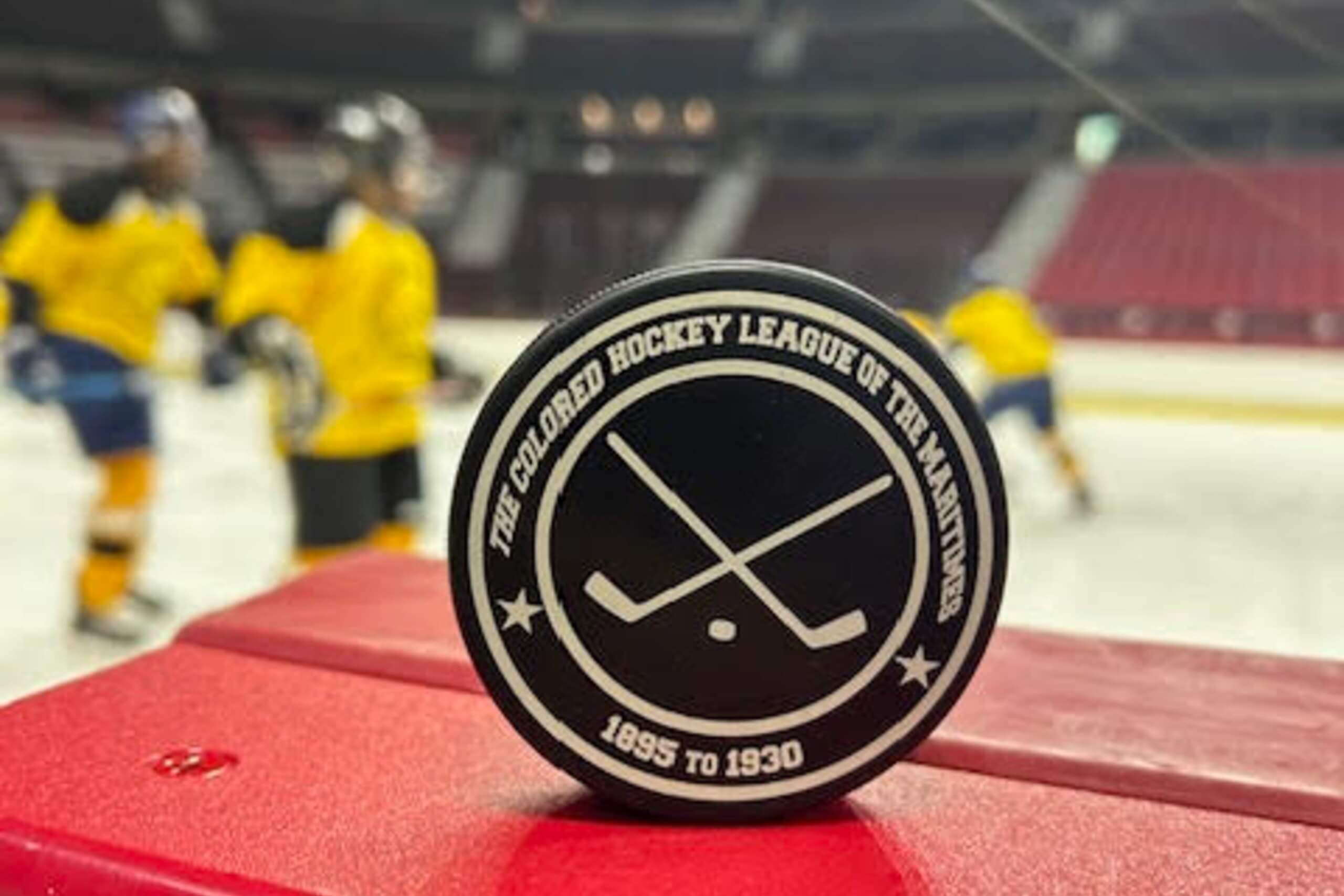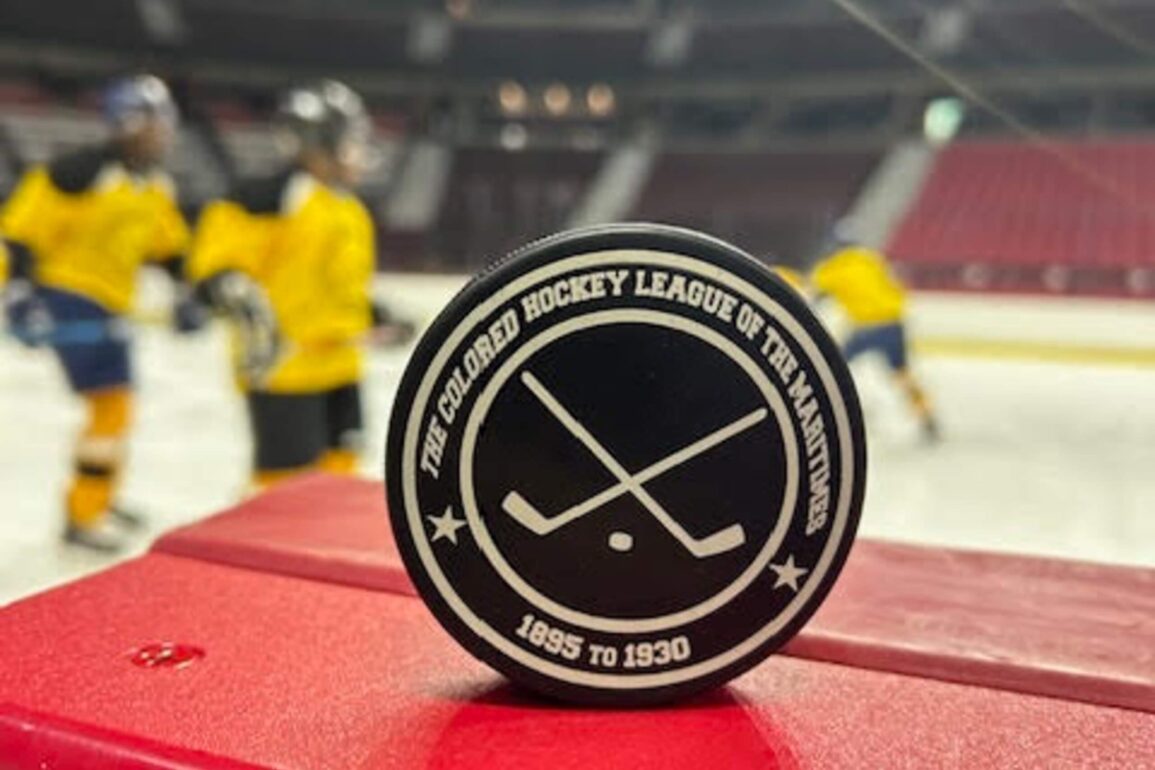Jean-Marie Guerrier was surprised when he first learned about the Colored Hockey League of the Maritimes (CHLM), particularly as a volunteer for Black History Ottawa working to push more stories to educate the culture of Canadians of African descent. Guerrier is not alone in his discovery, as many are unaware of how prominent Black history has featured itself in a predominantly White sport.
Advertisement
But that could change.
This past week, the existence of the CHLM was celebrated through youth hockey clinics, a presentation and a panel on the league’s history. The league was acknowledged during the Ottawa Senators’ Black History Month celebration game Saturday. And on Monday, a game honoring the CHLM’s anniversary will be played at the Canadian Tire Centre in Ottawa, featuring volunteer players representing the Halifax Eurekas and Dartmouth Jubilees, the two squads who played in the league’s inaugural game in 1895.
Four Black Nova Scotia-based community leaders once enticed people to join their churches and grow their congregations in a unique way: a church hockey league that would see Black men attend service in the mornings and play the sport afterward. This year marks the 130th anniversary of the CHLM. Hundreds of Black players played for teams across Eastern Canada in provinces such as Nova Scotia, New Brunswick and Prince Edward Island decades before the NHL began play in 1917.
“It helps to get over the perception people have sometimes: that hockey is not for Black people, or Black people don’t play hockey or participate in hockey,” said Guerrier, the vice president and treasurer of Black History Ottawa.
“With this commemorative game, we have players that are in their 40s, 50s, 60s and 70s who have been playing hockey for a long time, as well as youth who participate. The fact that a lot of people learn about this league, some for the first time, it really inspires them to keep going with their dreams — especially for the youth — of being a hockey player.”
The CHLM’s existence predates Hockey Hall of Famer Willie O’Ree, who broke the NHL’s color barrier in January 1958, and even fellow Hockey Hall of Famer Herb Carnegie, long considered the best Black player who never made the NHL but played on the first all-Black line in professional hockey.
Advertisement
Long after the league’s end in the 1930s, its story continues to hold interest. Its innovations and impact are seen in the pro ranks, all the way to the NHL.
The history of the league was documented by Canadian researchers George and Darril Fosty, in the book “Black Ice: The Lost History of the Colored Hockey League of the Maritimes 1895-1925,” which was released in 2004. Eighteen years later, the documentary “Black Ice” was based on the book and featured LeBron James, his longtime business partner Maverick Carter and rapper Drake as executive producers. The documentary won a People’s Choice Documentary Award at the 2022 Toronto International Film Festival.
In the book, Jubilees goalie Henry Franklyn is noted as the first goaltender to make saves while falling to his knees, a style that has morphed into the butterfly goaltending style that is commonplace today. Additionally, the slap shot, long attributed to Montreal Canadiens legend Bernie “Boom Boom” Geoffrion, was innovated by Eurekas star Eddie Martin in the late 1800s and used often in the early 1900s.
George Fosty believes Martin’s accuracy and power in hockey stemmed from his skills in another sport. Martin spent the warmer months playing baseball, as did many of the league’s participants, and similarly swung his hockey stick as he would a baseball bat.
“People made note of this in the newspapers,” Fosty said. “There’s at least two newspaper accounts of teams complaining about him and the accuracy of his shot. But it makes sense that Martin was a baseball player and he had taken his skill level to hockey and incorporated the style of swinging at the puck in the same way he would have swung at a baseball.”
The CHLM faced its share of racism throughout its heyday. White teams and leagues barred Black players from joining theirs. Additionally, Black teams could only play months after White teams and leagues had concluded their seasons, meaning CHLM games were often played in poor ice conditions.
Advertisement
Still, fans of many races attended league contests, and the games were covered by local media. The league was seen as faster and more physical compared to its counterparts.
The CHLM’s best teams competed against each other annually for the Colored Hockey Championship, similarly to how White teams battled for the Stanley Cup, known then as the Dominion Hockey Challenge Cup. However, CHLM teams never crossed over and competed for the Cup.
“We don’t quite understand why no team ever challenged for the Stanley Cup because there were at least two teams, maybe three, that would have been probably better candidates than some of these other teams that had gone out and sent out letters and requests,” Fosty said. “I would think that the Halifax Eurekas, for example, and maybe even the West End Rangers out of Charlottetown would have been better teams than the Dawson Nuggets.”
Despite the CHLM’s growth, it ended in the 1930s with many of its original players retiring. Real-world factors such as the Great Depression and other economic constraints also played a role in the league coming to a close.
“This league survived racism. It survived the Halifax Explosion, survived World War I. It finally didn’t survive the Great Depression,” Fosty said. “That was the last straw that broke the camel’s back.”

The Colored Hockey League of the Maritimes made its impact throughout the sport for more than three decades. (Photo courtesy of the Ottawa Senators)
The Fosty brothers came across the history of the league while writing another book, “Splendid is the Sun: The 5000-Year History of Hockey.” It took them seven years to complete the book, which was released in October 2004. They met with local historians such as Bob Dawson, who helped promote their findings. Dawson is one-third of the first all-Black forward line in Canadian university hockey history as a member of the Saint Mary’s University men’s hockey team in February 1970.
Despite initial skepticism and criticism from journalists and hockey historians — Fosty says he and his brother were even called “frauds” — the CHLM has now received recognition and commemoration.
Advertisement
“I guess that is due to the work of George, Darril and myself to keep that story alive and to keep it out there, to the point where more and more people have come to accept that history and highlight it vis-à-vis articles, podcasts and so forth,” Dawson said.
In 2020, Canada Post released a stamp in honor of the Colored Hockey Championship, featuring teams from the league. The stamp “recognizes the achievements and struggles of pioneering Black Canadian players who overcame adversity, broke down racial barriers and changed how ice hockey is played.”
Months later, the International Ice Hockey Federation acknowledged the league and its stamp. The NHL’s website also has made reference to the league through its Color of Hockey blog, led by William Douglas.
Last October, the Canadian government recognized the league as “an event of national historic significance” through Parks Canada’s National Program of Historical Commemoration. Last Monday, a plaque celebrating the league was unveiled at the Black Culture Centre for Nova Scotia in Halifax. This came after Dawson filed a nomination to the Canadian government, seeking to bring more awareness to the “history and the importance” of the CHLM.
On Monday, Dawson hopes more people continue to discover how intertwined hockey is with Black Canadian culture.
“I strongly believe that it’s more than just a game,” Dawson said. “Blacks are part of that history, and Black hockey history is part of Canadian history.”
(Top photo of the Halifax Eurekas courtesy of Stryker-Indigo New York)
This post was originally published on this site be sure to check out more of their content.










